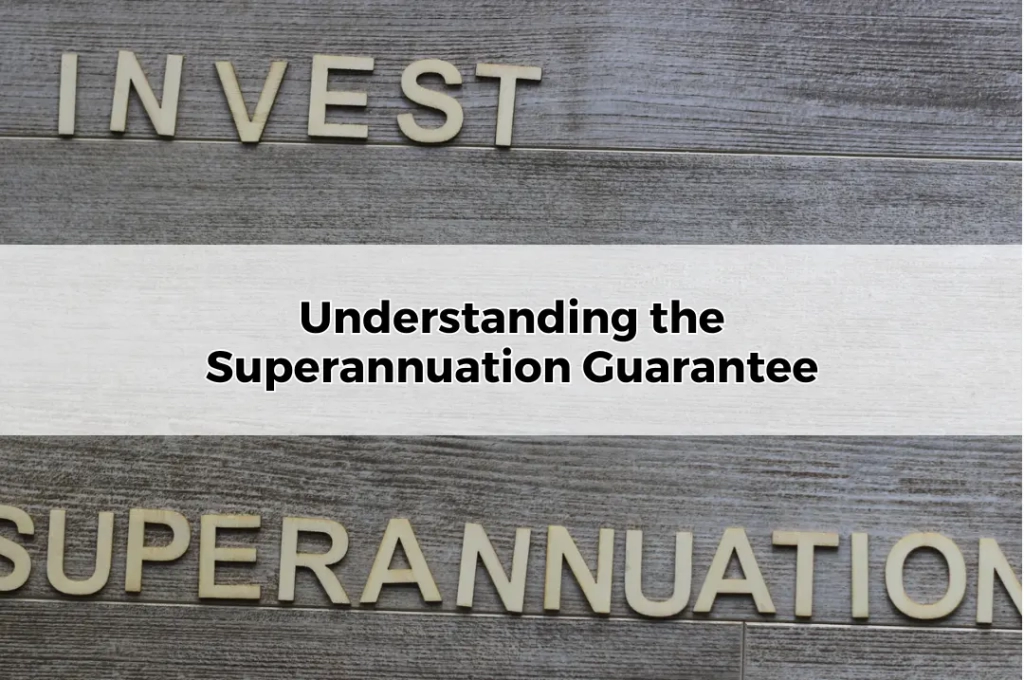Understanding the Superannuation Guarantee
Table of Contents
ToggleSuperannuation is a cornerstone of retirement planning in Australia. It ensures that individuals save regularly for their retirement, providing financial security and peace of mind. As living expenses rise and life expectancy increases, having a robust superannuation fund becomes ever more critical.
Overview of the Superannuation Guarantee
The Superannuation Guarantee (SG) is a compulsory system designed to ensure that Australian employees accumulate sufficient retirement savings. Introduced by the government, it mandates employers to contribute a percentage of an employee’s earnings into their superannuation fund. This systematic approach helps build a substantial nest egg over an individual’s working life.
History of the Superannuation Guarantee
Origins and Evolution
The concept of superannuation in Australia dates back to the early 20th century, but it wasn’t until the early 1990s that the Superannuation Guarantee was formally introduced. This initiative marked a significant shift towards a more structured and compulsory retirement savings scheme.
Key Milestones in Development
Key milestones in the development of the SG include its introduction in 1992 at a rate of 3%, subsequent increases in the rate, and various legislative reforms aimed at improving the system’s efficiency and coverage.
What is the Superannuation Guarantee?
Definition and Purpose
The Superannuation Guarantee is a mandatory system requiring employers to contribute a specified percentage of an employee’s ordinary time earnings into their chosen superannuation fund. Its primary purpose is to ensure that individuals have adequate funds to support themselves financially in retirement.
How it Works
Employers calculate the SG based on an employee’s ordinary time earnings and make contributions to the employee’s nominated superannuation fund. These contributions are made regularly, ensuring a steady accumulation of retirement savings.
Current Superannuation Guarantee Rate
Explanation of the Current Rate
As of now, the SG rate stands at 11.5%. This rate represents the percentage of an employee’s ordinary time earnings that must be contributed by the employer to their superannuation fund.
Future Rate Increases
The SG rate is set to increase gradually, reaching 12% by 2025. These incremental increases aim to bolster retirement savings, ensuring individuals have sufficient funds to maintain their standard of living post-retirement.
Employer Obligations
Who is Required to Pay
All employers in Australia are required to pay the SG for their employees, regardless of whether they work full-time, part-time, or casual hours. This obligation ensures that all workers have the opportunity to build their superannuation savings.
Calculation of Contributions
The SG contributions are calculated based on an employee’s ordinary time earnings, which include wages, salaries, and certain allowances but exclude overtime payments. Employers must apply the current SG rate to these earnings to determine the contribution amount.
Eligible Employees
Who Qualifies for the Guarantee
Most employees over the age of 18 are eligible for the SG, provided they earn more than $450 per month. This includes full-time, part-time, and casual workers, as well as some contractors.
Exceptions and Special Cases
There are exceptions, such as employees under 18 who work less than 30 hours per week, or those earning below the $450 monthly threshold. Additionally, some foreign executives and temporary residents may also be exempt from the SG.
Contribution Deadlines
Quarterly Contribution Schedule
Employers are required to make SG contributions on a quarterly basis. The deadlines are 28 days after the end of each quarter, ensuring regular and timely contributions to employees’ superannuation funds.
Penalties for Late Payments
Failure to meet the contribution deadlines can result in significant penalties, including additional charges and interest. Employers may also be required to pay the Superannuation Guarantee Charge (SGC), which includes the shortfall amount, interest, and an administration fee.
Choosing a Super Fund
Default Super Funds
Employers must provide a default super fund if an employee does not choose their own. These default funds are typically industry or retail funds selected by the employer based on performance, fees, and services offered.
Employee Choice of Fund
Employees have the right to choose their superannuation fund. They can select a fund that best suits their needs, whether it’s an industry fund, retail fund, or a self-managed super fund (SMSF).
Benefits of the Superannuation Guarantee
Financial Security in Retirement
The SG provides a structured way for employees to save for retirement, ensuring they have financial resources to support themselves once they stop working. This system helps reduce the reliance on the government pension.
Tax Advantages
Superannuation contributions and earnings within the fund benefit from favorable tax treatment. Concessional contributions are taxed at a lower rate, and investment earnings within the fund are taxed at a maximum rate of 15%, making superannuation a tax-effective savings vehicle.
Managing Your Superannuation
Tracking Contributions
Employees should regularly track their superannuation contributions to ensure their employer is making the correct payments. Most super funds provide online portals where members can monitor their accounts and contributions.
Consolidating Super Accounts
Many Australians have multiple super accounts due to changing jobs. Consolidating these accounts can reduce fees and simplify management. It’s advisable to roll over super into one account, ensuring better oversight and potentially higher returns.
Superannuation Guarantee and Self-Employed Individuals
Voluntary Contributions
Self-employed individuals are not required to pay the SG but can make voluntary contributions to their superannuation. This proactive approach helps build their retirement savings and take advantage of the tax benefits offered by the superannuation system.
Benefits for Self-Employed Workers
Making superannuation contributions provides self-employed workers with financial security in retirement. Additionally, these contributions can reduce taxable income and provide tax benefits, enhancing overall financial planning.
Future of the Superannuation Guarantee
Proposed Changes
There are ongoing discussions about potential changes to the SG, including adjustments to contribution rates and eligibility criteria. Staying informed about these developments is crucial for both employers and employees.
Impact on Retirement Savings
Proposed increases in the SG rate will significantly impact retirement savings, ensuring that individuals have more substantial funds to support themselves in retirement. These changes will help address the challenges posed by increasing life expectancy and rising living costs.
The Superannuation Guarantee is a fundamental component of Australia’s retirement savings framework. Understanding how it works, the obligations it imposes on employers, and the benefits it offers to employees is crucial for effective financial planning. By making informed decisions and taking advantage of the SG system, Australians can ensure a secure and comfortable retirement.









